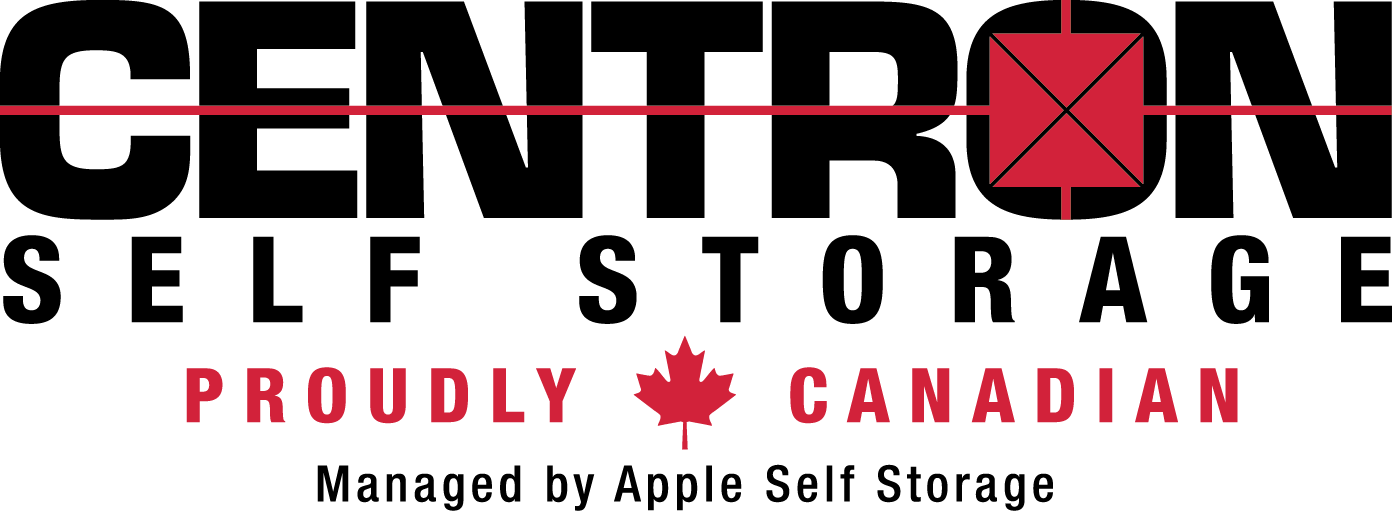Storage Lockers: 8 Must-Have Security Features
Storage lockers in North York and other Canadian cities have grown in popularity in recent years. In fact, many individuals and businesses are turning to storage units as a solution to free up space in their homes or businesses or store items they don’t have room for.
Whether you need a place to store household items, tools, or even valuable collectibles, selecting the right storage locker is critical to ensuring that your items are safe and sound. However, with so many available options, it can be difficult to determine which one to select.
Whatever you’re storing, you must consider the security features of a storage locker if you want peace of mind. Here are 8 security features to look for when selecting safe, secure, and affordable storage lockers for rent:
1. Strong and Durable Material
Whether you’re looking to rent a big or small storage locker, make sure it’s made of strong and durable materials. This makes it more difficult for potential thieves to break into the locker and steal your belongings. Reinforced doors and walls offer additional security against break-ins, making your belongings less likely to be stolen.
Also, a storage locker made from strong and durable materials is more likely to last longer. As a result, you won’t need to replace the locker as often, which will help you save money in the long run. In addition, a longer-lasting locker can provide added peace of mind, as you know that your items will be protected for an extended period.
2. Video Surveillance
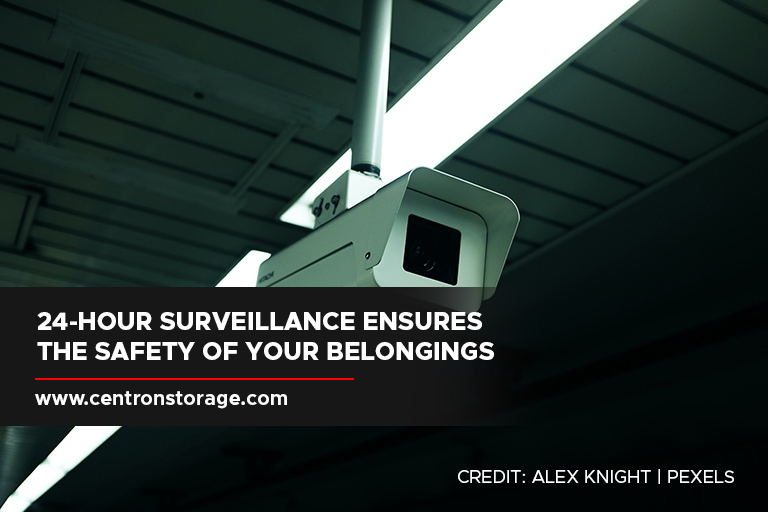
Monitoring your belongings with video surveillance can give you the assurance that they are safe at all times. The presence of video cameras can also deter potential thieves as they are less likely to attempt a break-in due to their presence.
In case of a break-in, you can use security camera footage as evidence to identify the culprit, assisting the police in catching the thief and recovering stolen items.
3. Tamper-Proof Design
Having a tamper-proof design provides peace of mind, as you know that your items are well-protected and secure. This can give you the confidence to store valuable or sentimental items in the locker, knowing they are less likely to be stolen or tampered with.
4. Climate Control
Climate control helps protect your items stored in the locker from damage caused by extreme temperatures, humidity, or other environmental factors. This is particularly important for items sensitive to temperature or humidity, such as electronics, musical instruments, or artwork.
By controlling the environment in the storage locker, you can preserve the value of your belongings over time. This can help to prevent damage that can decrease the value of your items, such as warping, discolouration, or corrosion.
Having climate control in your storage locker also gives you the confidence to store valuable or sentimental items in the locker, knowing that they are less likely to be damaged by environmental factors.
5. Controlled Storage Access
Controlled access is another important security feature when choosing a storage locker. This means that access to the facility is restricted to authorized individuals only. This can be accomplished through keyed access, security personnel, or biometric security systems, such as fingerprint recognition.
6. Fire Suppression Systems
Fire is another potential threat to your belongings, so it’s essential to consider the fire safety measures in place at the storage facility. Look for facilities that have fire suppression systems, such as sprinkler systems, to protect your belongings in the event of a fire.
7. Alarms and Sensors
Alarms and sensors can detect if someone has attempted to break into the locker or if the locker has been tampered with. This can alert security personnel or the police, allowing them to respond quickly to the situation and prevent theft.
8. Perimeter Fencing
Perimeter fencing is a physical barrier that prevents unauthorized access to the storage facility. This helps to deter potential thieves and keeps your belongings safe. Perimeter fencing provides extra security, as it creates an additional layer of protection.
Perimeter fencing can also control access to the storage facility, ensuring that only authorized individuals can enter. This can include features such as gates, keyed entry systems, or security personnel monitoring access.
Whether you are a collector, sports enthusiast, student, or small business owner needing secure and convenient storage, rent a storage unit that includes the aforementioned features. Rent a reliable self-storage unit today at Centron Self Storage. Call (416) 739-0000. Our facilities are secure so you can rest assured that your possessions will stay safe and free of damage.
Helpful Tips for Storing Winter Clothes Off-Season
Spring is just around the corner, so it is time to put away your thick and heavy winter clothes. Shorts, t-shirts, and bathing suits should take the place of bulky winter coats, sweaters, and scarves now that spring and summer are fast approaching. Switching out your wardrobe and storing out-of-season stuff can be difficult if you don’t have a large walk-in closet. While it may be tempting to throw every wool coat and winter sweater into a large plastic bucket and keep it in the attic for the next 6 months, making the effort to store your winter apparel properly will pay off by extending the life of your clothing.
But what is the best way to store your winter clothes? How do you store winter clothes in summer? Winter clothing storage requires some preparation. Follow these winter clothing storage ideas to make sure your clothes look and smell nice the next winter.
- Wash your clothes first
Winter clothing needs washing, even if they don’t seem dirty. Before washing anything, check the labels so you know how the material should be handled; wash what you can at home, and send the remainder to the dry cleaners. Many winter clothing items, including cashmere sweaters, should be dry cleaned, while others require hand washing. Remember that unwashed clothes can accumulate body oils while they are stored, which can attract moths and leave behind an odour that is nearly impossible to get rid of months later.
- Use deodorizers
The truth is that during the hot summer months when temperatures are quite high, there is a potential that your garments, regardless of where you store them, will begin to develop an awful musty smell. When you need your clothing again, it will smell fresh thanks to the deodorizers you added to the boxes. Each package or container ought to have a few drops of lavender essential oil in it. In the absence of essential oils, a few dryer sheets ought to work.
- Be smart about what to store
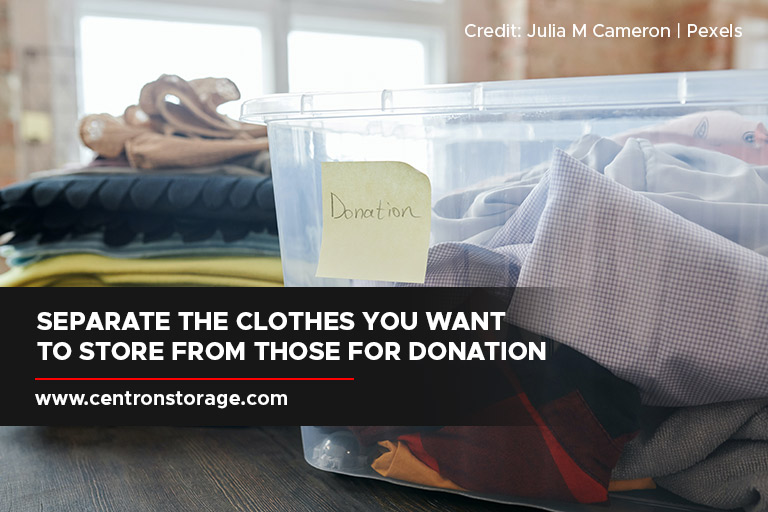
Start going through your closet and separate the goods that can no longer be repaired, are worn out, damaged, or no longer fit, or the ones that have been outgrown.
Get rid of everything you haven’t worn in years that you purchased at discount. You can also add any clothing items to your “donate” pile that just don’t fit your style any longer. When organizing your closet, follow the “one-year rule,” which states that you should get rid of anything you haven’t worn in the last 12 months.
- Pick the right storage
You cannot simply store clothing wherever in your house. The ideal setting for storing apparel that will be hidden away for several months is one that is dry, climate-controlled, and well-ventilated. Additionally, it’s important to keep stored apparel from heat sources and direct sunshine. If you don’t have enough space at home, renting a climate-controlled storage unit is a good option.
The basement makes a decent place to store winter clothing. Maintain a humidity of between 30 and 50%. You can run a dehumidifier for added peace of mind.
- Repair damaged clothes
Spend some time patching and repairing the items that require it. Some winter gear may turn out to be beyond repair and not worth the storage space. Making that choice now is preferable to waiting until the fall. Small holes, sweater pulls, and busted zippers should be fixable if you can sew reasonably well. If not, consider hiring a seamstress or tailor.
- Use plastic bins
When planning your storage, always remember to choose the best containers for storing your winter clothes. In contrast to cardboard boxes, clear plastic storage containers offer an airtight seal that keeps out dust and moisture. Additionally, plastic storage bins are more durable and can be stacked safely than cardboard boxes, so you should use them to store clothing that won’t be worn for a long.
- Use garment bags
Make sure to remove dry-cleaned items from their plastic bags.
Liquid chemicals are used throughout the dry-cleaning procedure. Your clothing’s fibres can turn yellow, and even worse, mould and mildew can grow if it hasn’t been given enough time to dry completely and is still wrapped in plastic, which traps any moisture.
Purchase some sturdy garment bags to store your winter jackets, suits, and other rarely worn stuff for the long term.
- Avoid vacuum-sealing winter clothes
You can conserve storage space by vacuum-sealing seasonal apparel using a hand pump device or an attachment to your vacuum. Given that your winter clothing is heavier and requires more storage space, it can seem more practical to store winter clothes in vacuum bags.
However, vacuum sealing isn’t always safe for garments. Vacuum sealing is not recommended for leather goods, down jackets, or clothes made of natural fibres like wool and cashmere.
This prevents the fabrics from breathing and may lead to excessive compression of the natural fibres. The clothing starts to lose its natural shape as a result. These products normally regain their former shape after being released from the vacuum seal, but sometimes they won’t.
- Fold, don’t hang
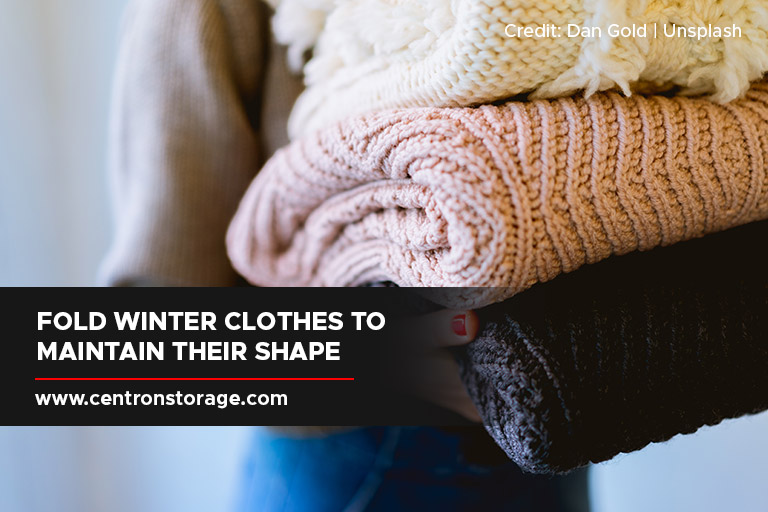
Hanging items that should be folded instead is another storage error that can cause clothing damage. When kept in a drawer, wardrobe, or storage container, thick winter knits like sweaters will keep their shape better. Otherwise, hanging them on a wire hanger will inevitably stretch out and possibly even become damaged.
You can relax and look forward to the sun-filled adventures of the upcoming season once your winter clothing has been cleaned and stored appropriately. Use these helpful tips when you start storing your winter clothes away. If you don’t want the inconvenience of finding storage near you, Centron Self-Storage is the perfect solution for you. They offer self-storage in North York with a variety of sizes and prices for you to choose from. Call now at (416) 739-0000!
How Storage Units Benefit Event Planners
The myriad of events that event planners handle every month calls for a staggering number of items, which begs the question, “How do event planners stay organized?”
One of the most crucial aspects of your job as an event planner is keeping track of your inventory. It can take a significant amount of effort to maintain a record of your contacts, receipts, decorations, and supplies. If you work from home as many event planners do, staying organized becomes even more important. Over time, amassing too many things will lead to clutter, making it difficult to find the right kinds of supplies for a specific occasion.
Whether you need a place to store decorations or a secure location for paperwork and documents, a storage unit is a helpful way to get your stuff organized and ready no matter how many parties you’re organizing at a given time.
Benefits of Storage Units
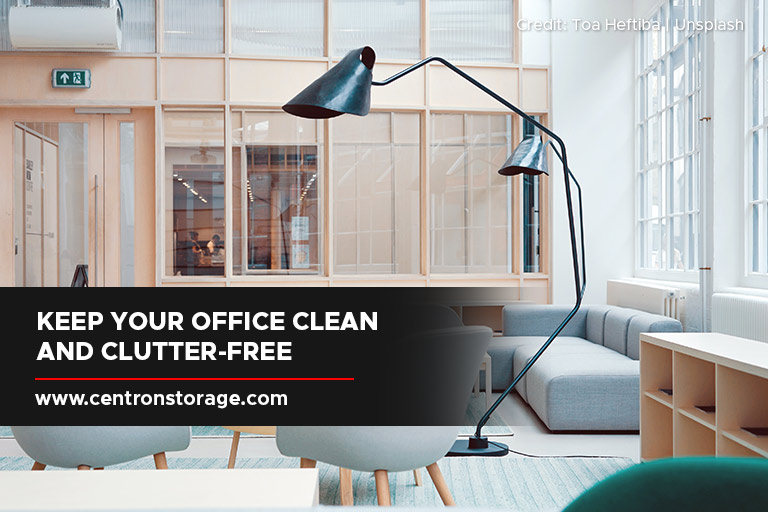
Space — and tons of it — is the one thing that every event planner wants. Here’s why a storage unit should be part of every event planning checklist:
- Frees up office space
A storage unit of any size opens up the space that would otherwise be occupied by valuable items in your garage or cabinets. The benefits go beyond simply remaining organized. You and your staff are at risk in a cluttered office. You’ve probably done your fair share of racing around to fulfil customer demands given the frenetic nature of the event industry. Every prop scattered around the office poses a tripping risk. Renting a self-storage unit will help you clear your office and makes your office a secure place to work.
- Keeps electronics safe
An event planner or organizer needs audio-visual (AV) equipment. Bright lights, image projectors, and a powerful music system may all transform a lacklustre gathering into one that generates buzz even after it has ended. However, organizers know that it can be challenging to safely store these devices. Moisture, no matter how minimal, can damage electronics. Since AV equipment contains metallic components, rusting is a big issue.
Even if you don’t have AV equipment, it is still a good idea to store your supplies in a cool, dry area to avoid mould growth. In this case, temperature-controlled storage facilities are important since they give event organizers a secure location in which to keep their goods.
- Simplifies logistics
Renting a storage unit in a central location allows you to stage any event anywhere without the need to haul materials too far. You can take your time when packing inventory sets, chairs, tables, decorations, and everything else and then transport and store the entire crate in a storage facility. When the time comes, sometimes, all you need to do is pick up your items from the unit.
- Safeguards documents and paperwork
Paperwork, dated customer files, and bills will eventually accumulate. Some organizers even maintain a complete binder for each event they plan. It becomes unnecessary to preserve these records at your home after a certain point. When planning to store crucial documents, think about scanning them as well to establish a digital backup. Paper documents, photos, and other crucial information can be kept in a climate-controlled environment to preserve their condition.
- Expands inventory
Those who organize events often have a wide inventory to satisfy all of their clients’ needs. You may be setting up the décor for a business dinner one moment and planning a wedding the next. These events each call for different supplies. Unfortunately, event planners can only stock as many supplies as their space can accommodate. To accommodate the dynamic timetable of event management, storage facilities allow organizers to grow and access their inventories easily.
- Manages seasonal decorations
You’ll need flowers and heart decorations for Valentine’s Day — but what happens to these decorations after the event? They will most likely take up a sizable portion of your office. This can make working and moving around the office difficult for you and your staff. Expanding your office space solely to accommodate your seasonal props may not be a financially sound decision. On the other hand, event organizers can easily cycle the inventory they need at any given time by renting a self-storage unit. You can then store them till the next year.
Tips for Storing Event Materials
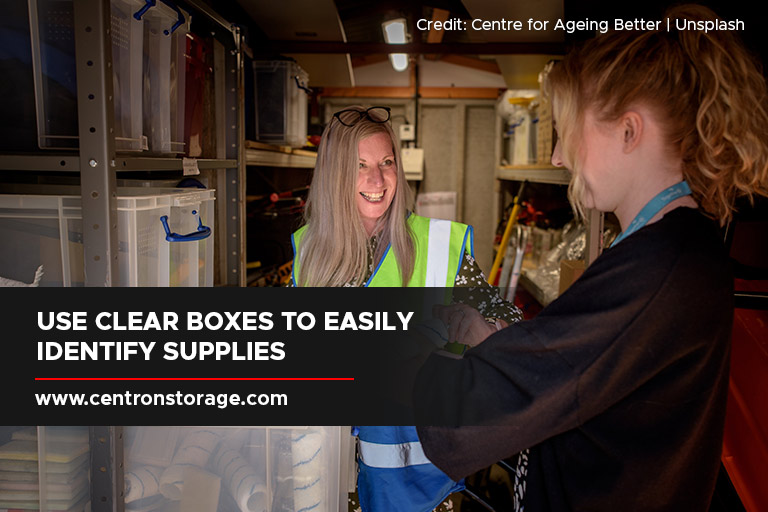
Keep an eye on your storage space to keep things organized between events.
Here are some easy tips and event planning storage ideas to help you manage your inventory:
- Choose what to store
You probably have obsolete marketing materials in storage that you no longer need, or perhaps, they are intended for a particular occasion or season. You should carefully evaluate what you’ll be using going forward and make sure that the tools and props you use more often are carefully preserved.
- Opt for a climate-controlled storage unit
You probably have a ton of finance records, important planning documents, and other material that has to be stored. If you want to keep everything safe but feel as if they’re taking up too much space at your headquarters, think about renting a climate-controlled storage unit. These storage facilities are an excellent choice because they protect your files and papers from humidity and extreme temperatures.
Many climate-controlled units include humidifiers and dehumidifiers as moisture management choices. They also help to maintain unit temperatures and protect your items from wear and tear.
- Use clear bins
Clear bins come to the rescue every time. Imagine that you only remembered you needed additional utensils for a dinner function at the last minute. They will be visible through the clear bins as soon as you enter your unit. You can simply take them and leave, saving you time and effort from conducting a thorough search of the unit.
- Label everything
You risk losing your items the minute you stop labelling. Keep the labels clear and distinguishable. Use labels like “red lanyards with white lettering” instead of simply “lanyards.” The rule of thumb is if you can’t see it, neither can anyone else, so make the labels big and visible. Use large print, vivid colours, and colour coding.
- Keep an inventory list
To ensure that events go off without a hitch, create an Excel file and distribute it to your staff. In this manner, you can create a digital sign-out sheet and manage all documents. Make a section for the last time items were checked, and monitor the items frequently. There is nothing worse than rushing to your storage unit, believing that the décor is there only to discover that it is missing.
Storage containers are the go-to solution for keeping businesses of all shapes and sizes tidy and organized. If you’re party planning with an office that is already overflowing with event supplies, Centron Self-Storage, a storage rental in North York, is happy to serve you. Call us today at (416) 739-0000 to reserve your unit.

How to Winterize Your Storage Unit
With the winter season here, it’s time to put away your patio furniture, ATV, and beach gear in favour of your seasonal holiday decorations. This change is a great chance for you to learn how to prepare for winter storage. A storage unit requires different precautions and preparations for every season. In the summer, the main challenges are heat and humidity. Whereas in the winter, you must be ready for rain and drastic temperature drops.
The secret to ensuring that your self-storage facility survives the winter is planning. Preparation for winter storage includes securing winter storage containers and knowing how to insulate storage units. Ideally, you should start preparing for winter concerns in the early fall and finish by October, at the latest.
Here are the top winter storage ideas to help you keep your items in great condition through the winter:
- Do a Pre-Winter Check
Make a list of everything you have in storage. If you have packed your unit properly, labelling the boxes, bags, and shelving units you have will allow you to identify which objects might need your attention.
This is an excellent time to replace any boxes or storage containers that appear to be worn out or damaged. Too much humidity might cause mould to grow in the storage unit. It is easier to prevent this from happening than to fix the damage that has already been done.
- Arrange Your Belongings
Getting your belongings off the ground is one of the best things you can do to get your things ready for the coldest of nights. Your most priceless belongings can be elevated using wooden pallets and shelves. Additionally, make sure nothing is forced up against the wall where the cold air is strongest. Finally, gather some wool blankets or furniture pads to protect your belongings.
- Use Insulation
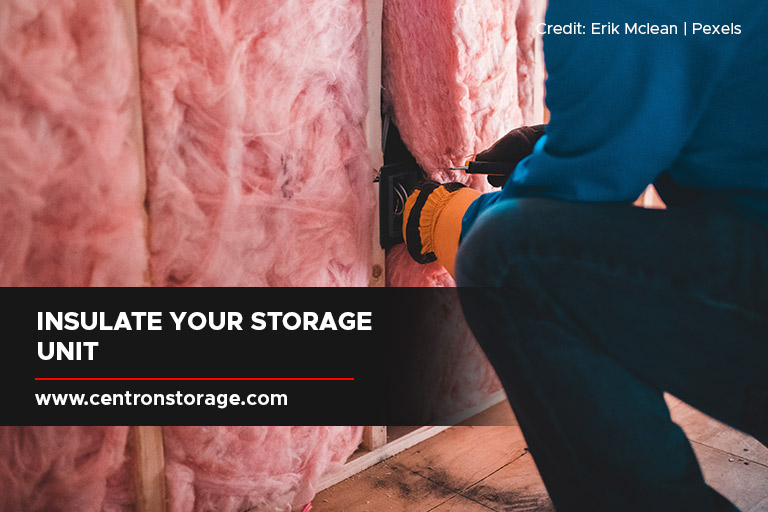
It is always a good idea to use insulation to protect your belongings during harsh winter conditions. Ideal materials for bedding include breathable cotton blankets and towels. Avoid using vinyl and plastic covers because they may retain moisture.
- Get an All-Weather Lock
The safety of your belongings is only as good as the lock you use. The majority of storage facilities offer locks for purchase or give you a standard lock for your unit. These are usually enough in normal temperatures, but they might not last in really cold ones.
When the temperature drops, some locks will freeze. Someone else may be able to gain access to your unit by breaking the brittle metal. On the other hand, the cold could also damage the internal mechanism, making it impossible for anyone, including you, to enter. At the same time, bad weather might affect access control keypads. Keypads with rubber buttons and touch screens are particularly prone to damage. If possible, switch to a keypad with metal buttons and use weather protection to prevent sticking.
- Use Climate-Controlled Units
A climate-controlled storage unit is your best option if you want to keep your belongings safe. Climate-controlled storage spaces are indoors and give renters the ability to control the temperature and humidity to meet the needs of their belongings. Even if you are unable to alter the temperature settings within your specific unit, the facility should be using a temperature that is ideal for most items. Your belongings will be protected from extreme cold during the winter, intense heat during the summer, and humidity during the rainy season.
Ultimately, you do not have to weatherize as much if you move up to a climate-controlled facility. Naturally, you still want to keep your unit tidy and organized, but you will not have to worry about many of the issues that are common in regular storage facilities.
Prepare your Stuff
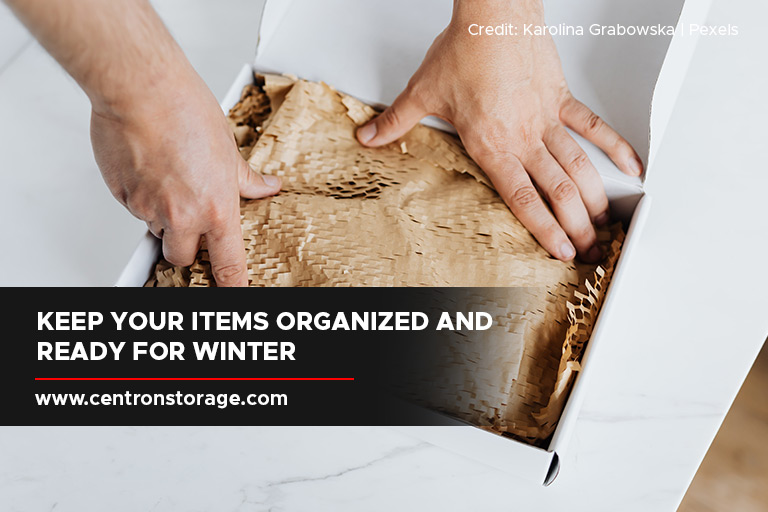
Knowing what is in your storage unit is the key to organizing it. This way, you can decide what will survive storage, what should not be put in a storage unit, and what you should take home with you until the weather clears. The following are some delicate items that need extra care:
- Memorabilia
You cannot afford to be negligent of your storage unit safety if you use it to keep delicate items with financial, legal, or sentimental value. Important documents, photos, trading cards, and other similar items should be carefully sealed in plastic.
- Liquid
When liquid freezes, it expands, which might harm other things in your storage unit. Cover items with liquid with a thick layer of wool or similar material to keep the liquid warm. Additionally, you might want to lay down a tarp and relocate them to a corner, away from the rest of your possessions. If their containers crack, the liquid will not spill onto anything else you possess.
- Electronics
Batteries have liquid inside the battery cells, which can freeze, break, and expand. Always remember to remove the batteries from any equipment. Electronics should ideally be kept in a tight box with lots of packing materials. Use the original packaging, if you have it, to safeguard these things.
- Furniture
Before the winter weather arrives, make sure any wooden furniture you are storing is dry. To help prevent mould and mildew, wrap the wood pieces with plastic wrap or a thick blanket.
With winter fast approaching, the time to make a storage investment is now. If you are from North York and are looking for “storage near me,” Centron Self Storage is the one for you. We offer a wide range of sizes and features to match your storage needs. Contact us at (416) 739-0000 now.
Items That Last Long in Storage and How to Pack Them Properly
Some people think that a self-storage unit is merely a short-term solution for storing personal belongings when they’re going through life transitions, like moving or renovations. However, self-storage can also be a long-term solution for people looking to store items the whole year round — and even longer! In some cases, customers who initially planned to rent a storage unit only for a few months realized the convenience of keeping their units and storing their personal items safely for years.
Renting a long-term self-storage unit ensures that your personal items (including rarely used and unused possessions) are kept safe and sound for months or even years.
However, you may find it difficult to decide which items can be safely stored and which you need to discard. In addition to checking the list of prohibited items in your lease contract, you need to see to it that the items you are planning to store can stay in storage for a long time. We’ve collected these long-term storage tips to help you make an informed decision.
Climate-Controlled Storage vs Non-Climate-Controlled Storage
While it can be tempting to load all your belongings and take them to the long-term storage unit, you shouldn’t do this without properly sorting them. Some items can be at risk of damage if left in a non-climate-controlled storage unit for an extended period.
Find out whether your items should be stored in a climate-controlled storage unit or a non-climate-controlled one.
- Climate-Controlled Self-Storage Unit
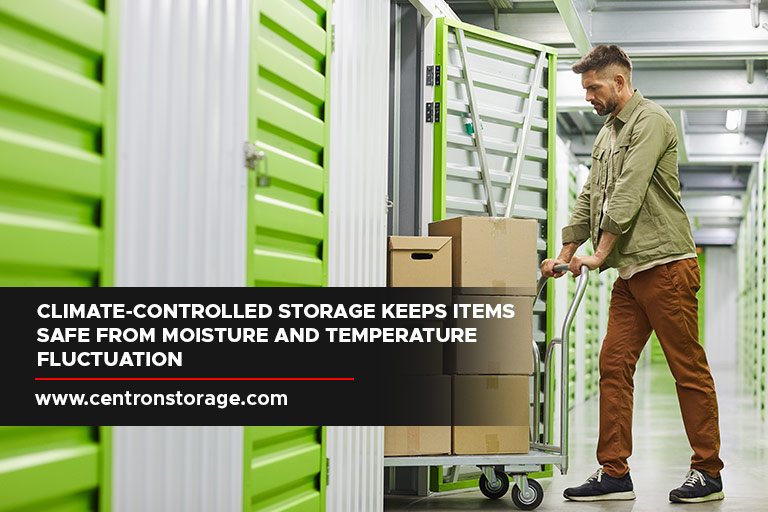
Climate fluctuation is a common concern for many self-storage renters. Freezing temperatures, extremely hot weather, and high humidity are factors that can cause significant damage to your belongings. Climate-controlled storage units are designed to keep the temperature and humidity levels consistent so that your stored items are safe from mould and mildew, fading and deterioration, and corrosion all year round.
Here are what you can safely store in climate-controlled storage units and how to pack these items for long-term storage:
- Books: Wrap the books carefully in paper towels or similar material to protect them from dirt and dust. Store them in a vertical position with the paper edges facing upward to protect the shape of the book as it allows them to support each other.
- Fabrics (Clothes and Blankets): Make sure that all fabrics are completely dry before storing them. Invest in good-quality plastic boxes to ensure that they remain clean, organized, and easy to find.
- Upholstered Furniture: Use a fabric disinfectant to clean covers and surfaces and protect upholstered furniture from mildew and mould. Disassemble any furniture parts and wrap them in plastic or shrink wrap to keep unwanted moisture out. You can use pallets or line the floor with plastic to create an additional barrier from moisture.
- Antiques, Family Heirlooms: Give your antiques a good cleaning to remove dirt and dust. For extra protection, treat their surface weeks before storing them in the long-term storage unit. Use bubble wrap to protect breakable materials, such as mirrors and lamps, and prevent blunt items, like furniture from knocking against them. Disassemble them whenever possible and avoid stacking them on top of each other.
- Musical Instruments: After cleaning your musical instruments, store them in their case to protect them against scratches and dust. Place them on shelves, not on the floor.
- Mattresses: To give the mattress a thorough cleaning, take off the bedding and protector, and vacuum it from all sides. Wrap it with perforated plastic and store it on a flat surface. Learn how to store the different types of mattresses properly.
- Appliances: Wipe the exterior of the appliances thoroughly to remove dust and other tiny particles that may scratch their surface. Scrub off the residue inside appliances, like refrigerators, ovens, and dishwashers. Make sure they are completely dry before securing their doors with tape. Use moving blankets or bubble wrap to protect the finish and avoid dents. Store them in an upright position.
- Artwork: Store paintings, mirrors, and framed pictures in specialized boxes. Make a large X on the glass surfaces using masking tape to add strength and prevent the glass from shattering. Wrap every piece of artwork individually in packing paper and then bubble wrap, and put them in the boxes.
-
Non-Climate Controlled Storage Unit
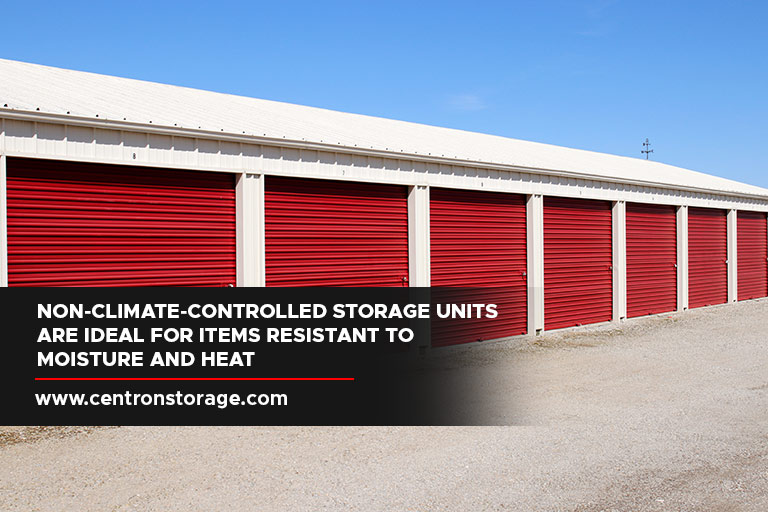
Storage units located outside the facility are non-climate controlled. It exposes the units to heat, cold, and humidity all throughout the year. However, if you have belongings that are resistant to temperature and moisture, then non-climate-controlled storage is an excellent option. These units are also more common and more affordable compared to climate-controlled ones.
- Cars: Do a thorough washing and cleaning before putting it into the storage unit. Invest in a quality vehicle cover to protect your vehicle from dust and dirt. Do not engage the parking brake — use tire stoppers instead. To ensure that your battery stays in good shape, leave it on for a couple of minutes to recharge and prevent carbon monoxide buildup.
- Tools: Clean the tools and use bubble wrap to cover the sharp edges. For small hand tools, place them in a toolbox or a durable packing box. Bundle long-handled tools and use protective blankets to wrap them. Store electric power tools in their original boxes or use boxes of the same size. Also, make sure to get rid of the fuel from gas-powered tools before storing them.
- Dishes: When storing delicate dishes, wrap them individually and place them in well-padded boxes. Place dishes on their side and position cups and glasses with their rims down.
- Furniture: Once you found the perfect long-term furniture storage, it is time to prepare your furniture so they stay in good condition for years. Clean your furniture thoroughly. However, do not use plastic wrapping since this can generate moisture and damage the item. Instead, use a fabric dust cover and place a blanket wrap over it for some added protection. If possible, dismantle table extensions and legs, as well as stacked segments.
If you are searching for long-term storage “near me,” you are in the right place. As your reliable and trusted storage rental in North York, Centron Self Storage offers an extensive range of long-term solutions. We also offer premium-quality packing and moving supplies to help you prep for long-term storage. For more information, give us a call at (416) 739-0000.
10 Essential Moving Supplies Must Haves
No matter how far you’re going or why you’re doing it, moving is a physically and mentally exhausting task. Transporting your items is the easy part; the bulk of your time will be spent on packing. Simplify the process by planning and making sure you have the things you need when moving into a new apartment or house.
Here is a rundown of all the best packing supplies for moving and other things to make your packing experience less of a hassle.
- Bubble Wrap
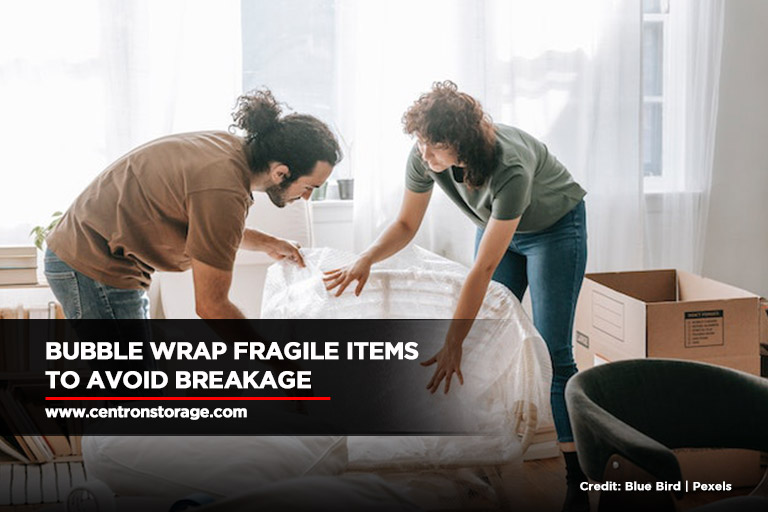
Bubble wrap is a must-have if you want to protect fragile items. For the best protection, always wrap goods with the bubble side facing inside. Bubble wrap works well for delicate breakables like a collection of teapots or snow globes, and other smaller items like statuettes and miniatures. Glasses and plates can be wrapped in bubble wrap with small bubbles to prevent breakage. When transporting larger, heavier objects like sculptures, vases, and appliances, use larger bubbles.
- Boxes
One of the most important moving supplies you’ll need when packing is boxes. Take note that boxes are not created equal; they come in different sizes, strengths, and sturdiness. Avoid overstuffing your boxes. This will make it difficult to transport and can even damage items.
To get around this problem, buy moving boxes in several sizes, including small for fragile and heavier items, medium for medium-sized items, large for light to medium-weight items, and extra-large for bulky items. Unfortunately, figuring out how many boxes you’ll need doesn’t have a universal formula. You can only estimate, so keeping an inventory will come in handy.
- Packing Tape
To seal boxes and make sure they stay that way until they reach their destination, standard packing tape is required. Although you might be tempted to purchase the cheapest packing tape you can find, we suggest spending a little more on a higher-quality variety. Cheap tape typically has poor sticking strength and is often too thin to last for a longer period of time. You should also buy packing tape in large rolls to reduce costs. If you want to speed up the taping process, you may also need a tape gun.
- Stretch Wrap
Stretch wrap can be used for a variety of moving-related purposes. It is recommended to close the drawers on furniture pieces like nightstands and dressers. If you’re going to stretch-wrap the entire dresser, you can leave your items inside unless it’s going to be too heavy. You can also use it to protect wood furniture from surface damage like dents and scratches.
- Permanent Markers
Every well-planned move needs a ton of labelling. Keep a few permanent markers on hand so you can quickly label your boxes. Use waterproof marker pens to prevent smudging and rain damage. Label your boxes as you pack. Create a labelling system, whether it’s based on the type of item, use, colours, or room designation. This way, you can tell what’s inside each box for easier unpacking. Label the top, bottom, and two sides of each box, making sure that at least one side can be read.
- Packing Paper
For wrapping and packing dishes, glasses, and other fragile or smaller objects, use packing paper. Packing paper is simply ink-free white or brown newsprint that preserves your items. When packing boxes, use it as filler to prevent objects from shifting. Newspaper is a good substitute, but packing paper is clean so you may unload without washing the dishes. Compared to bubble wrap, packing paper is less expensive and takes up less room. It may be used to wrap and cushion practically any item you plan to move extremely effectively.
- Plastic Bags
Put screws, bolts, and other tools in little plastic bags, and label them as you dismantle furniture so you’ll know where they belong. For this, snack-sized packs work well. You can also use bigger bags for cords and cables. Keep all of these bags in one accessible location so that when it’s time to reassemble, you can easily locate the hardware you need.
- Furniture Pads and Moving Blankets
Use furniture pads and moving blankets to protect your furniture and big pieces from scratches. You can buy or rent these from your moving company, or you can also use your own blankets as an alternative.
- Bungee Cords and Ropes
Bungee cords and ropes are used to fasten items after loading the moving truck with your boxes and furniture. If left unfastened, your items can move around the truck during the drive, causing damage. If bungee cords are not available, cargo straps or ropes can be used as substitutes for the task.
- Cleaning Supplies
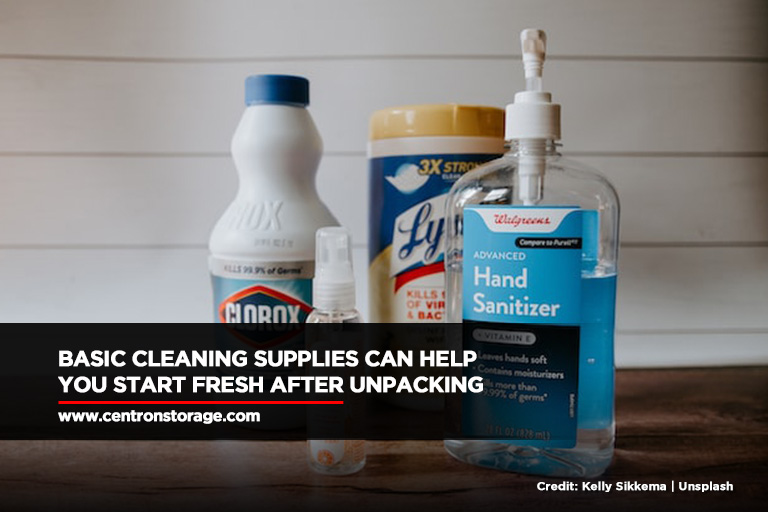
When you’ve reached your destination, you’ll be glad you kept some essential cleaning products so you can start fresh in your new house. For easier access, keep them with you rather than placing them in the moving truck. Paper towels, gloves, window and bathroom cleaners, a mop and bucket, a broom and dustpan, and a portable vacuum cleaner are all items best to keep on hand.
Take notes and use this list as a guide for your moving essentials. It’s never too early to begin gathering all of the necessary materials and supplies.
If you’re asking yourself, “Is there a storage facility near me?” and “Where do I buy cheap moving supplies?” — we might just have the perfect place for you! Centron Storage offers cheap moving supplies and safe and clean storage units in North York. Call (416) 739-0000 now!
What You Need to Understand About a Self-Storage Contract
Self-storage facilities offer cost-effective short-term or long-term storage solutions you can use to keep unused belongings. If you are planning to rent a storage unit, you will need to sign a self-storage contract.
Most self-storage companies provide a contract that outlines important conditions and agreement details for both parties. This allows you and the company to avoid any form of miscommunications and conflicts. However, contracts can be fairly complex. While some map out their terms and conditions in a simple and easy-to-understand manner, others might leave you at a loss.
Before signing on the dotted line, it is a good idea to read and make sense of the terms and conditions of the lease agreement for storage space.
What Terms Are Included in a Self Storage Rental Agreement?
A storage facility contract or agreement should clearly and carefully lay out the arrangement between the tenant and the self-storage owner. It contains essential key points, such as the contact details, unit purpose, terms, and payment information. The contract should also list the address and phone number(s), and email address of the storage facility and the client. The terms of the lease agreement should also include the start and the end date of the rental. For instance, the customer may sign up for a 1-year rental or the contract runs on a month-to-month basis. The unit purpose contains all the listed items stored within the storage space, such as personal items and non-perishable property.
Key Elements of a Self-Storage Contract
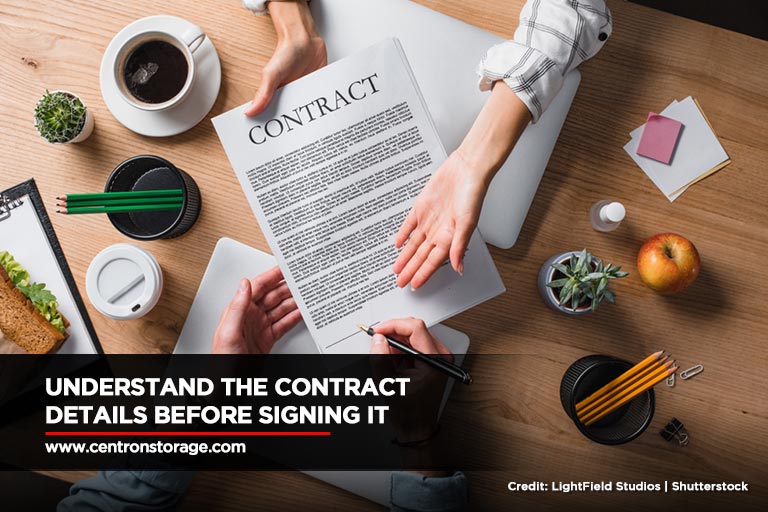
When renting a storage unit, it is crucial to thoroughly go through the contract and understand its content. Since the contract serves as a legal agreement between the renter and the facility, make sure it contains all the important details.
However, every contract is unique and terms and conditions will vary. Here are a few essential points and legal definitions that will help you navigate its content like a pro.
- Financial Details
Every self-storage contract provides an outline of the monthly payment due, describing how payments are accepted, such as by credit card, check, or online means. The following information can be found in the contract:
-
- Due date of monthly rent and various forms of payment accepted
- The required amount of deposit
- When is the payment considered late
- Fees collected for delayed payments, lock cuts, auctions to recover money owned and other fees.
- Actions taken by the facility if the tenant fails to continue payments
- Use of Unit
Every self-storage facility has its own unique set of rules and regulations that outline what the lessee can do or cannot do with their storage space. This may include:
-
- A list of items that are not allowed in the storage unit
- The maximum value of items allowed in the storage space
- Keeping the unit clean and in good condition
- Using a drip pan to keep the fluid from staining the floor when storing a vehicle
Also found in the contract are the penalties incurred if the renter disobeys the rules. In most cases, it can be an additional charge or a possible eviction.
- Notices
Certain situations call for the tenant to provide notice to the storage facility manager. The information must include:
-
- Change of contact information, such as phone number and address
- The specific number of days in which the landlord must be notified before moving out
Since most contracts are on a month-to-month basis, the contract may automatically renew if the tenant failed to provide notice of moving out.
- Landlord’s Rights
Just as you have certain rights and responsibilities as a lessee, so does the storage facility landlord. However, there are things that you can and cannot do, and the rules should outline them clearly in the contract.
-
- Make necessary repairs
- Understand the conditions that give the landlord the right to lock you out of the unit and what steps to take to regain access
Common Legal Terms and Definitions

The contract may use several legal terminologies that you might not understand. Below are the definitions of the most common jargon that will help you make sense of the contract.
- Lien on Personal Property
A lien means that if you fail to pay your monthly self-storage fee, the facility manager will have the right to put your stored items on sale at a storage auction.
- Release of Liability Waiver
Most contracts will ask the renter to agree to a waiver stating that the facility landlord will not be responsible if your get injured at the facility or for your damaged belongings. For example, getting your hand stuck and injured in the door. The self-storage personnel will not at any cost be liable for your injury.
- Indemnification
This term means that when the lessee does something that results in a claim against the storage facility, they or their insurance provider will have to defend and pay the judgments against the facility. For instance, if a tenant picking up items from their unit accidentally backs their vehicle into another tenant, resulting in an injury, and if the injured party files a legal suit against the party at fault and the facility, under indemnification, the party at fault will have to pay both claims.
- Breach
A breach refers to the violation of any terms in the contract. The most common example of a breach is when a tenant decides to discontinue paying their rent or is living in the storage space.
- Exclusion of Warranties
This clause implies that in the event that the lessee is unsatisfied with the rented space after signing the contract, the facility manager will not be held responsible for it. Be sure to check the storage space personally before you sign the contract.
Most self-storage contracts are generally not confusing. If you happen to come across complex terms, it is your responsibility to understand them. Before you affix your signature on the contract, make sure to review the terms and conditions with the facility manager. Do not hesitate to ask questions to make sure that all details of your rental contract are clearly understood.
At Centron Self Storage, we have friendly and knowledgeable staff members who are ready to assist you. We will be glad to help you understand the process and paperwork before signing the contract. Call us at (416) 739-0000 for your friendly neighbourhood storage rental in North York.
Why Decluttering Is Important
Self-care takes many forms. Sometimes, all you need is a chance to relax. However, relaxing is never truly complete unless you also pay attention to your environment. Decluttering your surroundings is a great way to accomplish just that. Getting rid of clutter improves our physical and emotional health.
For one thing, clutter and disorder may be distressing, which may explain why Marie Kondo and minimalism continue to have such a devoted following. After all, organizing your belongings not only makes it simpler to find what you’re searching for, but it may also boost your mood and state of mind in a variety of ways.
Here are some of the life-changing magic of tidying up:
- Reduce anxiety
Hoarding is when you keep items you don’t really need, don’t cherish, or don’t offer any value to your life. Clutter can negatively impact your life in many ways, like distracting you and removing tranquility from your life and house. Clutter may also have a negative influence on your health and happiness. Stress, despair, anxiety, and insomnia are all consequences of living in a messy environment.
Maintaining your house is less stressful when it involves less time and energy. You can also rest, relax, and enjoy your house more because it is easy to keep clean. All of these contribute to a greater sense of joy and calm in your house, which is why decluttering can be so therapeutic.
- Reduce financial stress
One of the benefits of decluttering often overlooked is it can actually help you save money. When you clean, you may discover stuff that you had forgotten about. Consider cleaning up your closets, pantry, and medicine cabinet. There’s a good chance you’ll come upon items from your shopping list.
Knowing what you have enables you to analyze your needs and budget your spending more effectively. You’ll start to think twice about buying stuff on the spur of the moment once you start placing more worth into your space. Because you’ve discovered a new appreciation for orderly, uncluttered places, you’ll become much more cautious about what you buy. And everything you can do to reduce financial stress is beneficial to your overall well-being.
- Can be a good exercise
Although getting up and moving might be challenging at first, exercise makes us feel more invigorated. Cleaning is sometimes overlooked as a form of exercise, but any effort helps. In the same way that having fewer things means spending less time managing them, having less stuff means spending less time maintaining them. You’ll have more time and energy to focus on the things that are really important to you, such as your work and hobbies.
- Helps your productivity
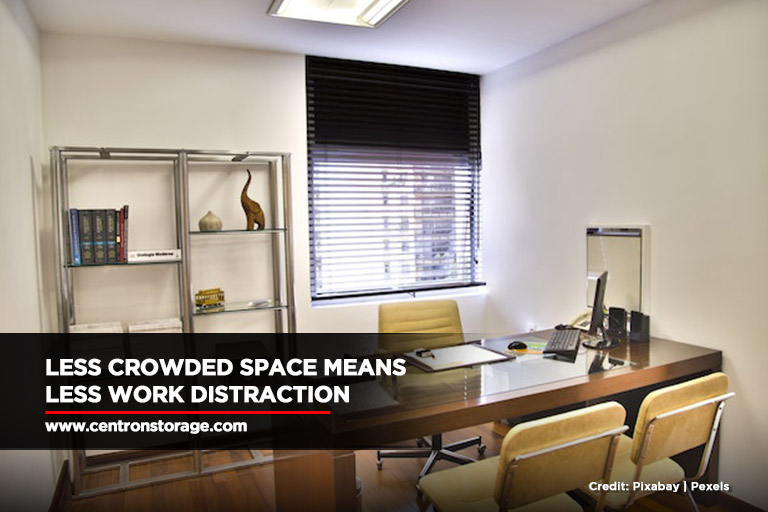
When the house is crowded, your thoughts may rapidly become a jumbled mess, making it difficult to focus and finish even the most basic chores. Exposure to cluttered, disorderly situations might affect your awareness, concentration, and focus, as well as exhaust your cognitive resources. Also, living in a congested environment is linked to lower productivity and more persistent procrastination.
So, if you work from home, this is very crucial to consider. Eliminating physical mess from your house can help remove the distractions, helping you accomplish more of your to-do list.
- Feel more secure
Another reason why decluttering your home is important is that clutter could be a potential safety issue. If there are cables on the ground, for example, someone could trip on them and fall. It can also become a health risk if piles of junk have started to collect dust or bugs. Furthermore, clutter can cause stress or friction amongst family members, particularly if they have differing views on what constitutes tidiness.
Though “home” is often thought of as a safe and comfortable place, clutter might weaken that sense of security. A study found that women who rated their houses as more cluttered had higher levels of stress hormones and are in a sadder disposition throughout the day than those who viewed their homes as more peaceful and restorative.
- Saves time
Even while it might not seem like much, searching and not knowing where you placed your belongings can be quite time-consuming and frustrating. Fewer possessions mean less “stuff” to care for, clean, and manage. You now have more free time to devote to the things that are important to you. It may be more time to spend with the people you cherish, more time to engage in a passion project, or more time for yourself.
- Creates more space
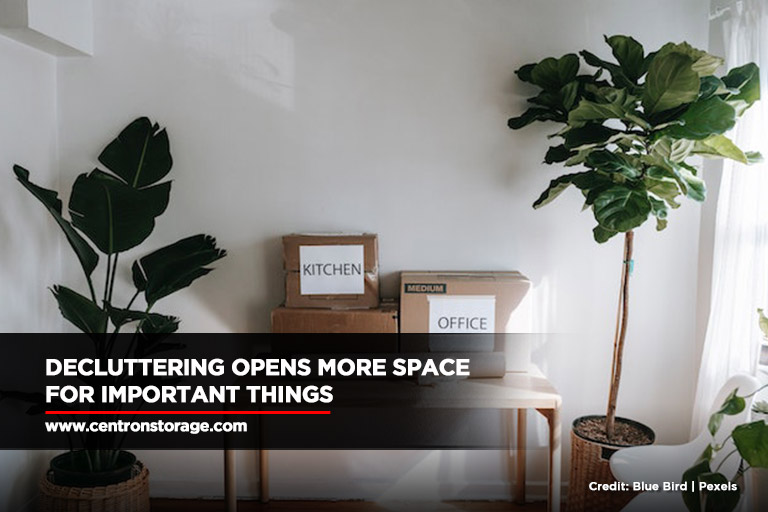
Decluttering is sometimes mistaken for being a minimalist, but that doesn’t have to be your objective. You may only concentrate on the items in your home that have value. Not everything needs to be thrown out while decluttering. Instead, it is letting go of things that you don’t truly need, enjoy, or utilize in order to make room for the things that are most important to you.
You may use the extra space to exhibit special sentimental objects that you love rather than retaining the bunch of books you know you’ll never read. Decluttering not only makes room in your house but also gives you more time and attention to devote to the things that are most valuable to you. Removing the superfluous makes room for the things you actually care about, so decluttering and self-care go hand in hand.
- Improve health habits
The health benefits of decluttering are plenty. According to research, decluttering can result in better sleep and other healthy practices. A strengthened immune system, assistance in maintaining a healthy weight, and a decreased chance of developing significant health issues like diabetes and heart disease are just a few advantages of getting more restful sleep.
It’s important to keep in mind that decluttering doesn’t have to be done all at once if the work seems too onerous. Focus on one area at a time or allot simply 15 minutes every day. Decluttering is a task that takes time to complete, much like improving your health.
Your life will be much simpler if you have a place you feel at ease. It will also have a great effect on your mental health. It is beneficial to incorporate decluttering into your self-care regimen because your environment has a significant impact on your overall health and quality of life.
When you’re up for extreme decluttering and looking for a place to store the items that no longer give you joy, go to Centron Self Storage. Our self-storage rental in North York uses state-of-the-art technology and thoroughly trained employees to keep your items safe round the clock. Call us at (416) 739-0000 to reserve.
How to Organize Important Documents Simply and Safely
When it comes to organization, one of the most frequently neglected areas is arranging essential files and documents. Not only are people unfamiliar with it, but they also have no idea how to organize critical documents properly. Many people are struggling to organize all of their valuable information so much that they are unable to find them when needed the most.
With receipts, utility bills, mails, and other important files, these documents can be the biggest reason for table clutter. You most likely have a pile of documents that you know you should save but don’t know where to place them. Make use of these creative solutions to keep your paperwork organized.
What Documents Should You Keep in a Safe?
The first question to resolve is which “essential documents” should be kept.
The answer will depend on each individual, but there is no need to continue keeping cabinets full of papers. Here are some documents you need to get a hold of:
- Vital Records and Identification
Birth, marriage, and adoption certificates, for example, are frequently required when enrolling in school, collecting benefits, or applying for a passport. These are also frequently required documents for foreign travel, government transactions, and providing proof of citizenship.
- Wills and Deeds
A written Will is extremely valuable in the event of an unanticipated or extremely tragic accident for your intended asset distribution to be carried out as you’d like, but proof of ownership, which includes property titles, falls into this list of relevant things to safeguard.
- Medical Records
Health records include any documentation related to your medical history, such as routine physical examination results, which may be useful as you age.
- Insurance and Financial Records
The list of financial records you need to keep is extensive, ranging from annual tax returns and bank statements to company stock certificates, retirement plans, pensions, and other financial documents. This list also contains any documentation you may require for proof of insurance as well as any benefit claims to which you may be entitled.
- Employment and Educational Documents
Many of your business or employment paperwork is probably already protected by insurance plans or financial records, but it’s crucial to evaluate anything relevant to your current employer, as well as academic documents.
- Vehicle Information
This involves everything from licenses and registrations to storing car maintenance and repair records.
- Home Documents
Many of your home documents are usually covered in deeds, insurance policies, and financial records, but there’s more to it than just that. There are also warranties, owner’s manuals, maintenance checklists, and other records that you may need when the time comes.
What Is the Best Way to Organize Important Documents?
Even the most disorganized, overcrowded filing cabinet containing personal items can be managed. All you need is time, patience, and an effective paper storage method.
In sorting anything from insurance claims to credit card statements, here’s how to make the organization of important documents as simple and secure as possible:
- Create an Organizing System
When it comes to filing crucial documents, it’s all about what works for you. Start by categorizing them into folders such as vital records, medical records, home documents, and so on. Later on, you can branch out into sub-categories that are relevant to the organization, such as credit card statements and utility bills under financial documents. Any irreplaceable documents should be stored in a fireproof or waterproof container.
- Sort and Label Accordingly
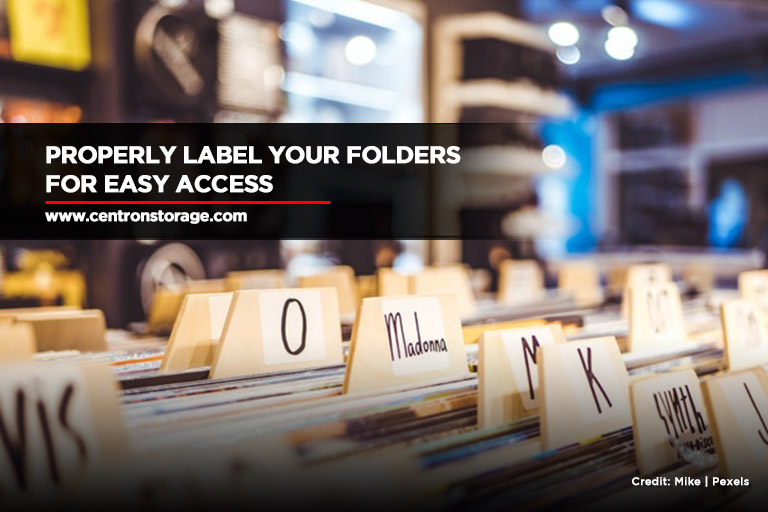
Create labels that identify broad categories first, followed by more specific descriptions. Sort alphabetically to facilitate searching. Shred old or unnecessary documents containing personal information such as your name, address, and, notably, your credit card number. Lesser sensitive documents can simply be thrown away.
- Determine Size
Evaluate the amount of storage space you require. If you will keep the majority of your files electronically, for example, a large filing cabinet may be unnecessary. It will only take up so much space for little use. Plus, you might be inclined to stuff it with unnecessary files and items that shouldn’t be in a filing cabinet in the first place. Use a desktop file box instead.
- Think About Use Frequency
Items you require more frequently, such as school forms and recipes, should be kept in easy-to-reach places. High racks in less-used cabinets, for example, are ideal for storing files that you won’t be needing as much, including tax documents and bank records.
- Set a Drop Zone
Create a daily drop zone for incoming mail and paperwork in a busy area of the office or house, such as the kitchen. Designating a particular location will allow you to keep an eye on the documents and keep them from accumulating around the house. A basket or box will save space and make it clear when items have overflowed and need to be dealt with. Before putting anything in the drop zone, remove any junk mail and filler paper. Keep it a habit to deal with the mail that comes in at least twice a week.
- Go Paperless
Some things should be kept as physical copies, including birth certificates, identification documents, deeds, and vehicle registrations. But for other things, like medical records, financial records, and receipts, you can always request paperless statements.
Digitally organizing papers saves space, and your computer’s search engine can easily assist you in finding exactly what you’re looking for. Remember to apply the same rules to digital labels as you do to physical ones, and back up your files to an external hard drive or an online storage service, such as Google Drive.
- Have a Safe, Fireproof Deposit Box or Storage
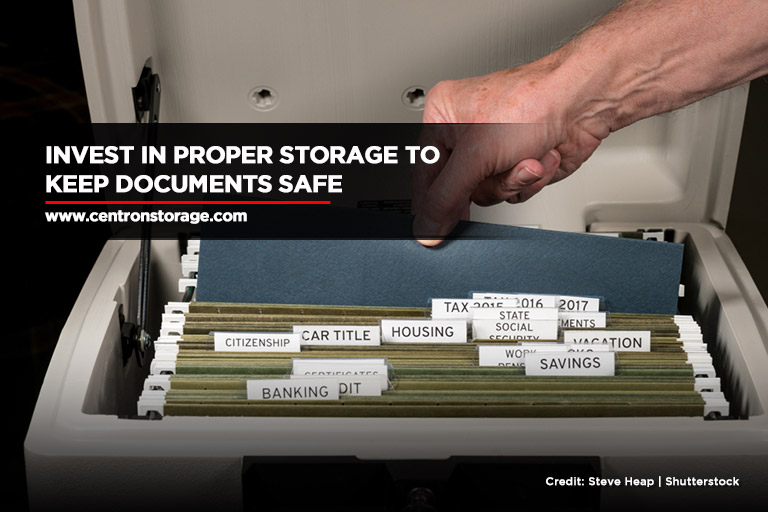
Unforeseen circumstances occur, and it is heartbreaking to lose all valuable belongings, including important documents, to a tragic event like a fire. So you should keep those extremely vital papers in fireproof storage or a safety deposit box. Additionally, renting an off-location storage space can also help you clean up and save space at home or in your office.
Where to Keep Important Documents
Creating a system that lets you access important documents whenever necessary with great ease will relieve you a great deal of stress. Clear your pile and start organizing.
For storage of important documents, you can trust Centron Self-Storage. Call us at (416) 739-0000 to reserve a space in our storage facilities in Toronto.
